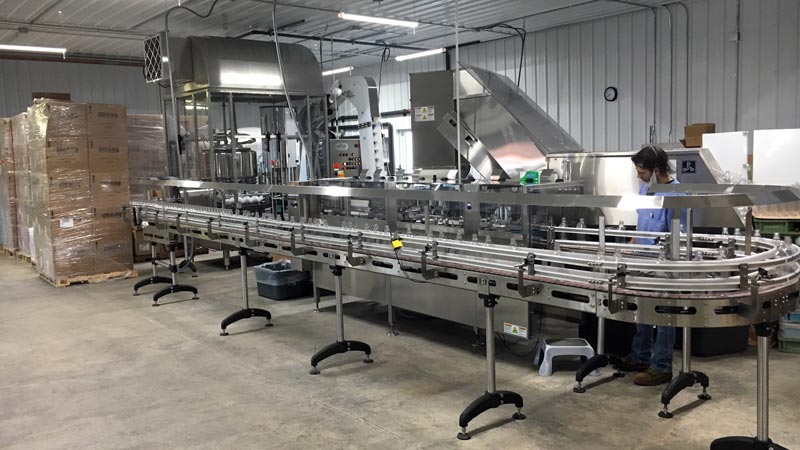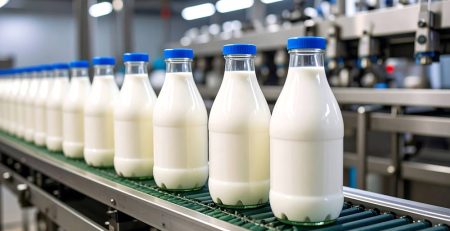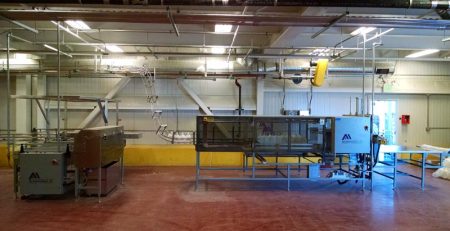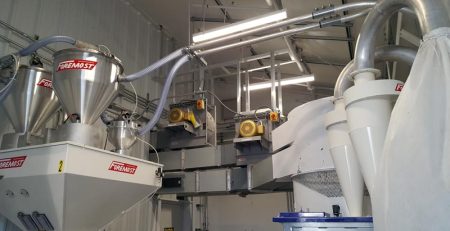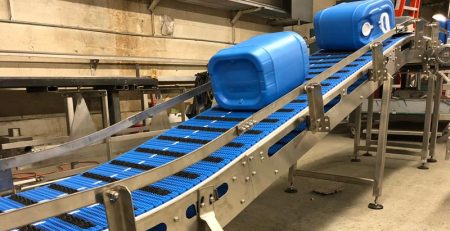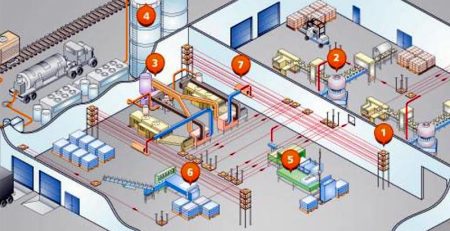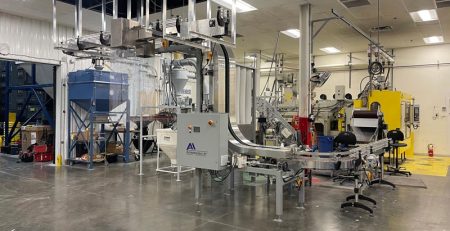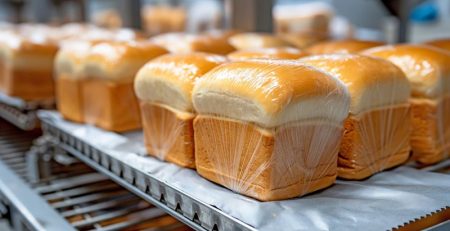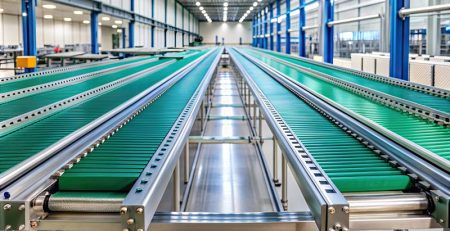Choosing the right secondary packaging equipment is an essential decision for manufacturers seeking to streamline operations, enhance productivity, and maintain product integrity. Secondary packaging, which encompasses materials and machinery used to group primary packaged goods for transport and retail, plays a critical role in protecting products and ensuring efficient handling.
With a wide range of options available, determining the best equipment for your needs involves a careful evaluation of your operational requirements, product characteristics, and long-term business goals. This blog will explore the key factors to consider when selecting secondary packaging equipment to help manufacturers make informed decisions.
Understanding Secondary Packaging
Secondary packaging is the layer of packaging that surrounds primary packaged goods. Examples include shrink-wrapped bottles, cardboard boxes, trays, and cases. While primary packaging protects the product directly (e.g., a bottle or can), secondary packaging facilitates handling, storage, and transportation. For businesses in industries such as food and beverage, pharmaceuticals, and consumer goods, secondary packaging ensures product safety and enhances supply chain efficiency.
The selection of secondary packaging equipment depends on factors such as the type of product, production volume, and distribution requirements. Equipment options range from manual systems to fully automated solutions, offering flexibility for different business sizes and operational needs.
Key Considerations for Choosing Secondary Packaging Equipment
1. Product Characteristics
The nature of the product being packaged is a primary determinant of the equipment required. Consider the following:
- Product Size and Shape: Irregularly shaped items may require specialized machinery, while standard-sized goods can often use conventional systems.
- Material Sensitivity: Fragile or perishable items may need additional protective measures during secondary packaging.
- Packaging Configuration: Decide whether your products will be packaged in cases, trays, bundles, or other formats.
Understanding your product’s specific needs will help narrow down the type of equipment best suited for your operations.
2. Production Volume and Speed
Assessing your current and future production needs is vital. Low-volume operations might benefit from semi-automated solutions, while high-volume production typically requires fully automated systems to maintain efficiency and reduce labor costs. Equipment capacity, measured in units per minute, should align with your production output to avoid bottlenecks in the packaging process.
3. Integration with Existing Systems
Consider how the new secondary packaging equipment will integrate with your existing production line. Seamless integration ensures a smooth workflow and minimizes downtime. Look for machinery that can communicate effectively with upstream and downstream equipment, such as primary packaging machines and palletizers. Compatibility with existing conveyor systems and control software is also crucial.
4. Space Constraints
Evaluate the available floor space in your facility. Some secondary packaging equipment requires a significant footprint, while others are designed to fit into smaller areas. Modular or compact equipment can be a great option for facilities with limited space. Additionally, consider the ease of installation and potential future expansions when planning the layout.
5. Flexibility and Scalability
As markets evolve, your packaging needs may change. Equipment that offers flexibility to handle different product sizes, shapes, and configurations is invaluable. Scalability is also important; investing in machinery that can be upgraded or adapted to higher production capacities can save costs in the long run.
6. Material Compatibility
The type of packaging materials you plan to use—such as cardboard, plastic film, or corrugated trays—should influence your equipment choice. Ensure that the machinery is compatible with the materials and can handle them without causing damage or inefficiencies. Sustainability considerations, such as using recyclable or biodegradable materials, should also be factored into the decision.
7. Ease of Operation and Maintenance
User-friendly equipment minimizes training time and reduces the risk of operator error. Look for intuitive controls, clear displays, and automation features that simplify operation. Regular maintenance is inevitable, so equipment with easily accessible components and minimal maintenance requirements can help reduce downtime and associated costs.
8. Cost and Return on Investment (ROI)
While the upfront cost of secondary packaging equipment is a significant consideration, it’s equally important to evaluate the long-term ROI. Consider factors such as energy efficiency, labor savings, production speed, and equipment lifespan. A higher initial investment in durable, high-quality equipment may result in lower operational costs and greater savings over time.
“Whether you’re a small manufacturer or a large-scale operation, the right equipment will ensure that your products are packaged securely, efficiently, and in a manner that meets market demands.”
Types of Secondary Packaging Equipment
The specific type of secondary packaging equipment you choose will depend on your application and business goals. Here are some common categories:
1. Case Packers
Case packers are used to load primary packaged products into cases or cartons. They come in various configurations, including top-load, side-load, and wrap-around styles. These machines are ideal for industries like food and beverage, where efficient case packing is critical for distribution.
2. Shrink Wrapping Machines
Shrink wrapping equipment uses heat to apply a tight plastic film around products. This method is commonly used for bundling items such as bottles, cans, or boxes. Shrink wrapping provides excellent product protection and enhances shelf appeal.
3. Tray Packers
Tray packers create and fill trays with products, offering a sturdy solution for shipping and retail display. They are widely used in industries requiring product stability, such as dairy and beverages.
4. Palletizers
Palletizers automate the process of stacking packaged goods onto pallets for storage or shipping. Options include traditional and more advanced collaborative robots (cobots) that work alongside human operators. Palletizers improve efficiency and reduce manual labor.
5. Overwrapping Machines
Overwrapping equipment applies a thin layer of film over a product or group of products, providing an additional layer of protection and improving product presentation. These machines are commonly used for high-end retail packaging.
Benefits of Choosing the Right Equipment
Investing in the right secondary packaging equipment can provide numerous advantages, including:
- Enhanced Efficiency: Automated solutions reduce manual handling and increase production speed.
- Improved Product Safety: Robust secondary packaging protects products during transport and storage.
- Cost Savings: Efficient equipment reduces material waste and labor costs.
- Adaptability: Flexible machinery allows businesses to respond quickly to changing market demands.
- Sustainability: Modern equipment supports the use of eco-friendly materials and energy-efficient operations.
Steps to Make the Right Decision
To ensure you select the best secondary packaging equipment for your needs, follow these steps:
- Conduct a Needs Assessment: Analyze your production requirements, including product characteristics, volume, and packaging configuration.
- Consult Experts: Collaborate with equipment manufacturers or industry experts to identify suitable options and evaluate their capabilities.
- Request Demonstrations: Whenever possible, request demonstrations or visit facilities where the equipment is in operation to observe its performance firsthand.
- Compare Options: Consider multiple equipment solutions and weigh their pros and cons based on your specific needs and budget.
- Plan for the Future: Choose equipment that can grow with your business and adapt to evolving requirements.
Secondary Packaging Equipment from Automation Ideas
Selecting the right secondary packaging equipment is a strategic decision that can significantly impact your production efficiency and product quality. By carefully assessing your needs, considering all relevant factors, and prioritizing long-term value, you can invest in solutions that align with your operational goals and support your business growth. Whether you’re a small manufacturer or a large-scale operation, the right equipment will ensure that your products are packaged securely, efficiently, and in a manner that meets market demands.
If you are interested in our material handling solutions, or would like to learn more about any of our automation equipment, please contact us here or give our dedicated support team a call at (616) 874-4041.

